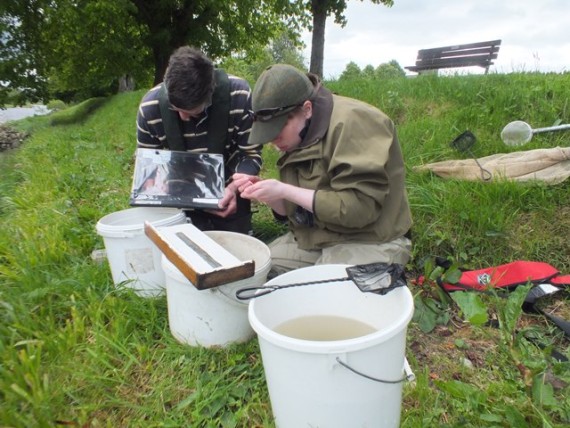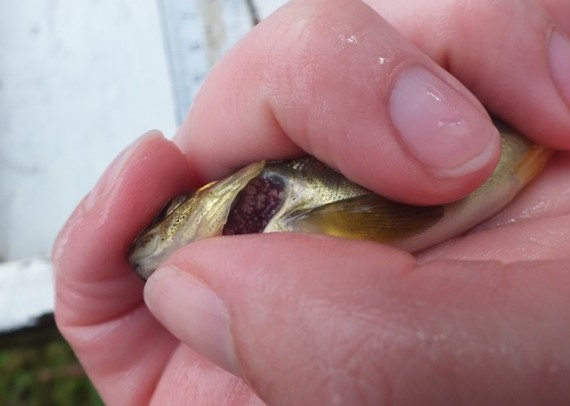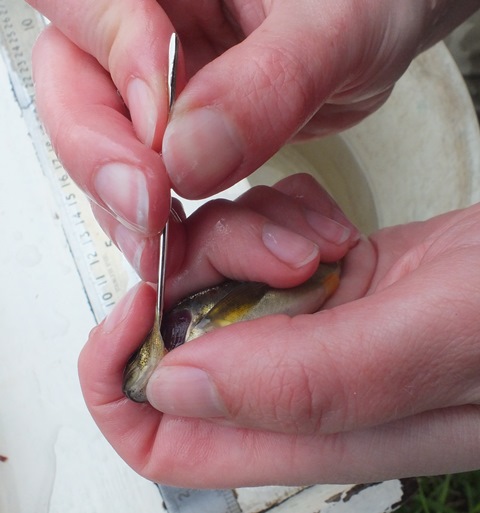The Spey mainstem is too big for quantitiative electrofishing surveys in the normal manner but last year we re-introduced some of the quadrat surveys with defined areas of the riverbed electrofished semi-quantitatively i.e. single run survey protocol.
This blog post reports on the results from two of the sites, one in Aberlour and the other upstream at Blacksboat.
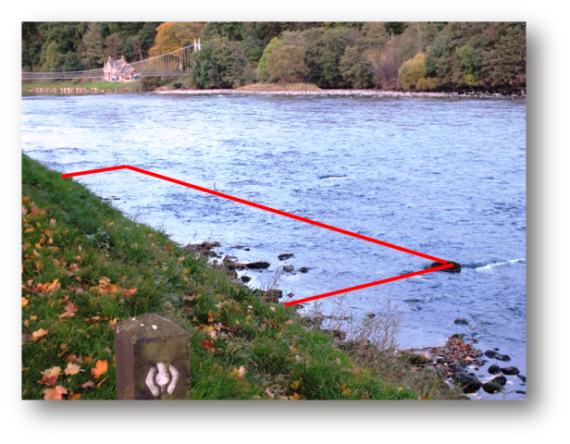
Site S7 in Aberlour. The area fished is 22m long by 5m. In 2015 ranunculus had made a reappearance, providing cover for fish but making them difficult to extract; as a result we missed quite a few fish, although not enough to significantly alter the results.
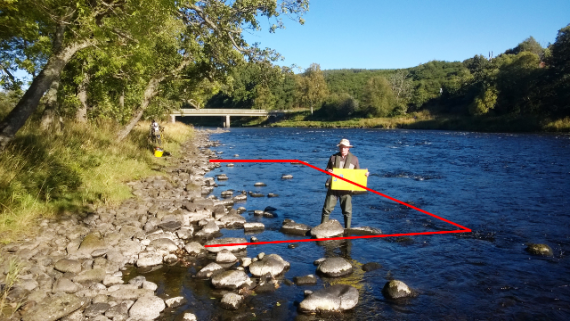
Site S9, just upstream of Blacksboat. The dimensions of this site were similar to S7, although just under 20m long. This was a new site a short distance downstream of the site surveyed in 2014 but will be a more suitable site going forward.
The river at the Aberlour site is very stable and there were no significant physical changes since last year other than the reappearance of ranunculus. The surveys were completed within a day of each other, in early Oct in 2014 and 2015.
In 2014 we caught 151 salmon fry and 70 salmon parr at the site in Aberlour whilst in exactly the same area yesterday we caught 110 fry and 28 parr. This is a sigificant reduction in fish densities, certainly for parr especially when considering that the 2014 survey was after the damaging August 2014 Hurricane Bertha spate.
An analysis of the size distribution of the fish shows some interesting differences.
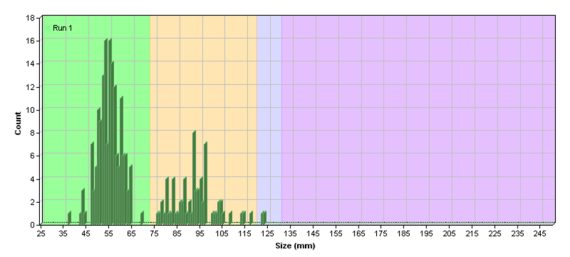
Aberlour site, S7 1st Oct 2014. Of the 70 salmon parr captured 63% were over 90mm and therefore likely to smolt in 2015, the remainder would probably spend another year in the river before smolting in 2016 (if they survive that long).
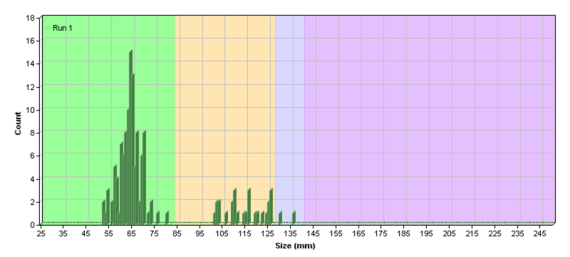
Aberlour site, S7 2nd Oct 2015. 28 salmon parr but all well above the 90mm smolting threshold.
In 2014 the mean size of the fry was 54mm, whilst on practically the same day in 2015 it was 63mm. The mean size of the 1+ parr in 2014 was 91mm whilst in 2015 it was 114mm ( note that the scales have still to be read for the 2015 samples but aging by size distribution won’t be far out). So there was a much lower density of parr at that site in 2015 but they are all above the smolting size threshold.
The large size of the fry has been a feature of the 2015 surveys even though the summer temperatures were never high and the mean water temperature must have been lower than in 2014. A factor contributing to the bigger fry is probably the lower parr densities. High parr densities would suppress the fry population through predation, harrassment and displacement from the best feeding lies.
The findings at the Blacksboat sites were similar regarding the average sizes of each age class and parr densities, although fry densities were higher here in 2015.
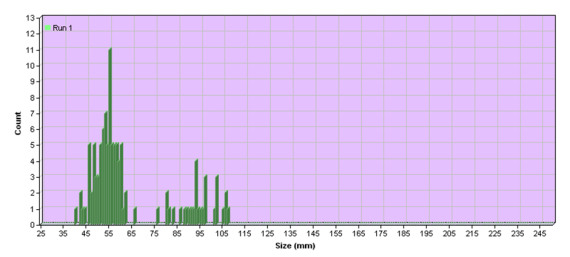
Blacksboat site 1st Oct 2014. Of the 29 parr captured 72% were above the 90mm threshold. (Not sure why the colour coding for age classes didn’t work for this graph when exported from the database)

Blacksboat site 2nd Oct 2015; all the salmon parr were above the 90mm smolting threshold.
The salmon fry at the Blacksboat site were smaller in 2014 than in 2015 (53mm in 2014 and 57mm in 2015), with the 1+ parr 89m in 2014 compared to 103mm in 2015.
All of this highlights the dynamic situation that occurs within any territorial species when population densities or environmental conditions change. Parr densities are down in 2015 but those present are larger with a higher proportion likely to smolt in 2016; partially offsetting any loss in production, and possibly improving subsequent survival.
This could result in a situation whereby in 2016 there are few 2+ parr but a large class of 1+ parr from which the 2017 smolt run will be derived. We intend to maintain these selected semi quantitative mainstem surveys on an annual basis providng the opportunity to monitor these changes in the parr population structure over a longer period.
The post Spey mainstem analysis: parr size distribution appeared first on Spey Fishery Board.
Spey Fishery Board

